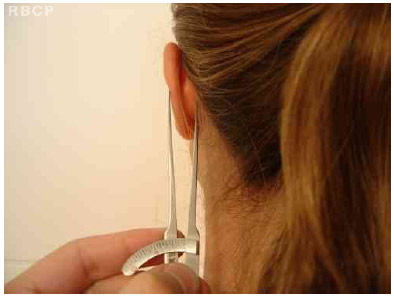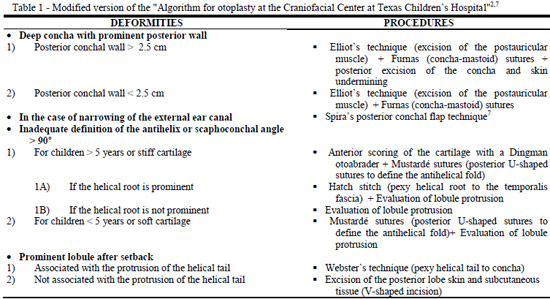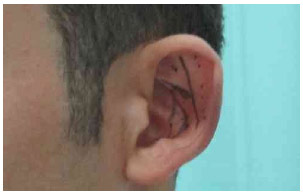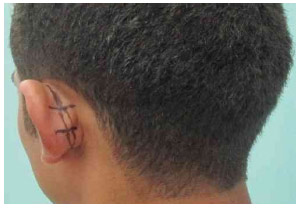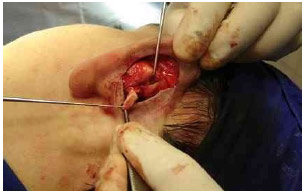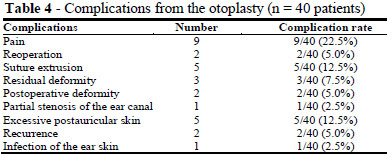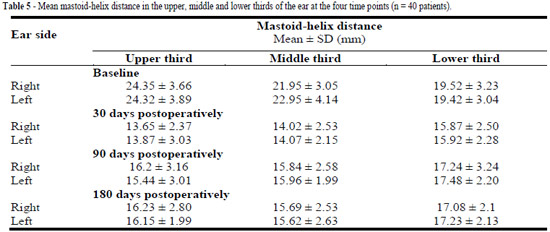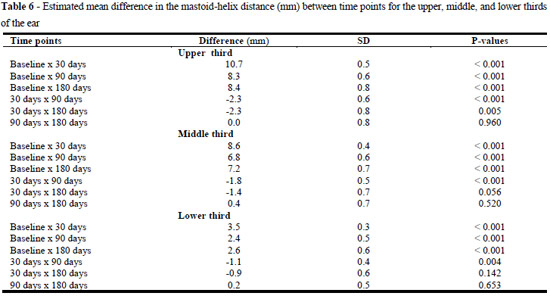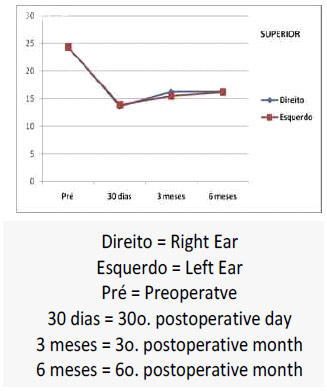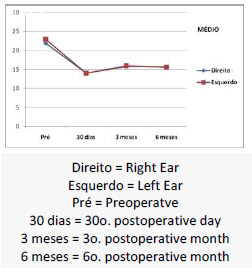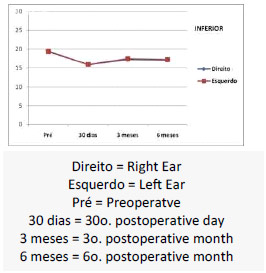ABSTRACT
BACKGROUND: The goal of aesthetic otoplasty is the correction of ear deformities by creating harmonious and symmetrical external ears, without visible scars. Otoplasty techniques based on the excision of postauricular skin are associated with high recurrence rates. Modern otoplasty is based on cartilage-cutting and cartilage-sparing techniques, alone or in combination, which lead to lower recurrence rates.
OBJECTIVE: We evaluated the efficacy of otoplasty combined with other techniques in the correction of ear deformities, based on a modified version of the "algorithm for otoplasty at the Craniofacial Center at Texas Children's Hospital".
METHODS: Forty patients, who underwent otoplasty for prominent ears in our institution between March and September of 2009, were prospectively assessed. The mastoid-helix distance was measured preoperatively (baseline) and at 1, 3, and 6 months postoperatively.
RESULTS: The most common deformities were scaphoconchal angle greater than 90º (51.3%, 41/80 ears) and conchal hypertrophy > 2.5 cm (46.3%, 37/80 ears). Recurrence occurred in 2 (5%) patients and partial stenosis of the ear canal in 1 (2.5%). Significant reductions in the mastoid-helix distance were observed at the three time points compared with baseline (P<0.001); a significant reduction was present in the immediate postoperative period (P<0.001), followed by a small increase 3 months postoperatively (P<0.005), which appeared to stabilize between 3-6 months postoperatively (P=0.520).
CONCLUSION: Otoplasty performed according to the modified algorithm resulted in a significant reduction of the mastoid-helix distance, which slightly increased in the early postoperative period, and re-mained unchanged 6 months postoperatively.
Keywords: Otologic surgical procedures. Ear, External. Deformities.


